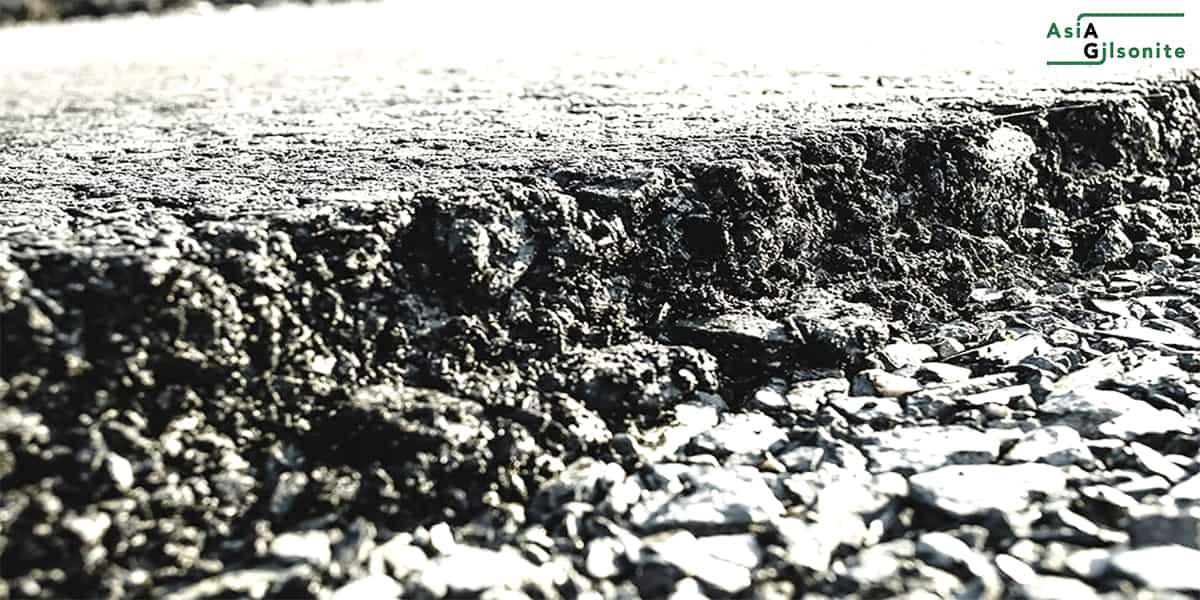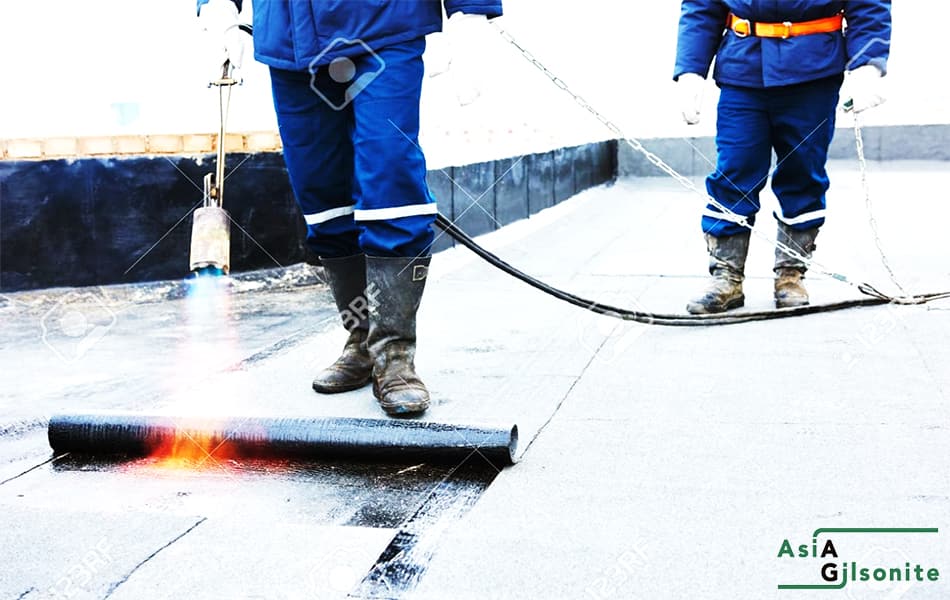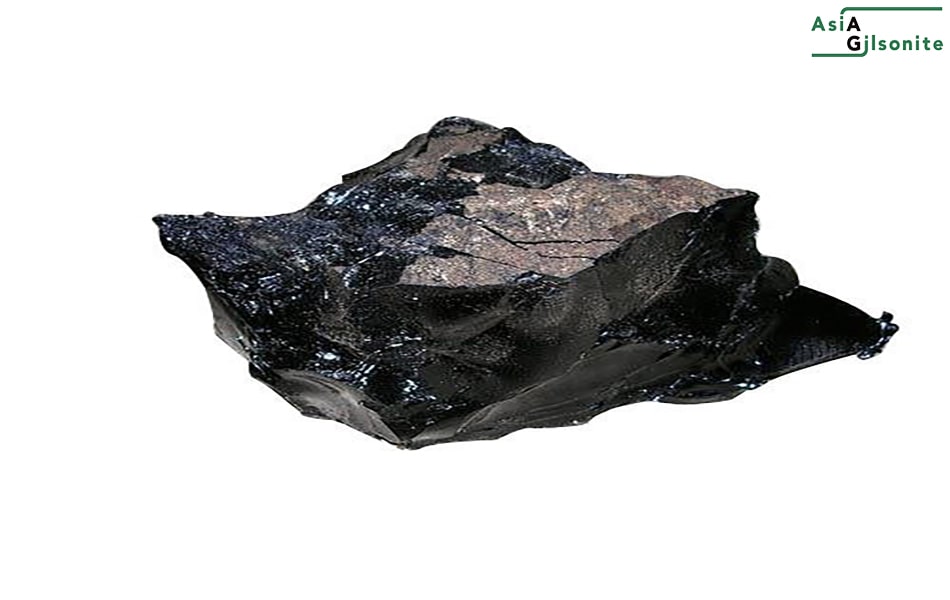In this practical-educational article of Asiagilsonite, we intend to provide valuable and purely educational materials related to Gilsonite for construction. We try to focus on the topics and sub-categories of the main topic. Sub-topics include Properties of Gilsonite for construction, Advantages of Gilsonite for construction, Impact of Gilsonite on construction and Importance of Gilsonite for construction. Stay with us.
Properties of Gilsonite for construction:
Gilsonite, in combination with natural asphalt, can be utilised as a bitumen amplifier and curing agent. It also offers a one-of-a-kind combination of high efficiency and low cost for high-stress road paving and preservation. The capacity to create Gilsonite road mixtures with higher stability than traditional ones is a key benefit. Properties of Gilsonite for construction include those previously mentioned. We’ll look into it further in the next sections.
Numerous Gilsonite” features are modified to produce a product that operates well in terms of wear, pothole resistance, fatigue cracking resistance, low temperature cracking resistance, bond strength, viscosity, and yield point. The resistance to potholes in the wheel pathways is the resistance to longitudinal surface sinking. The adhesive power of the compactor at the joining places, including but not limited to the adhesive power between the filler and the binder, is defined as the compactor’s maximal binding power. The resistance to direct longitudinal displacement of a distinct part of the road surface generated by the passage of cars that affect the pavement is known as impulse resistance. In order to prime heavy hydrocarbon, which is available from Gilsonite without limitations, heavy asphalt, porous asphalt, coarse asphalt, and road tar are de-asphalted.
When bonded into hot asphalt, Gilsonite reduces the penetration and increases the viscosity of the binder, which is bad for low-temperature properties of pavements and can also cause thermal cracking. Asphalt paving, improved by means of Gilsonite, perform well in areas with high traffic. Gilsonite is also used in mixing with aggregate before adding cement. Intense transport flows are often observed all across the country today because of the improvement in transportation.
The benefits of using Gilsonite construction grade:
The benefits of using Gilsonite construction grade are as follows:
- Deformation resistance improved;
- Road performance improved economically;
- Less dents;
- Better fatigue resistance;
- Higher durability;
- Correction of weak mixtures;
- Adaptation for weak aggregates.
Asphalt concrete’s final characteristics and the amount of Bitumen Modifier “Gilsonite” in the mix are determined by the operating conditions and the asphalt mix. Depending on the conditions of production, Gilsonite percentages will vary in asphalt mixes. During preparation work, roadbed preparation work includes checking its compliance with design conditions, locating the road, cleaning the roadbed of contaminants, and installing side stops. Putting hot and warm mixes on the road follows preparation of the roadbed.
The sealant contains bitumen, SBS, Gilsonite, Rubber Process Oil, and crumb rubber for sealing cracks and joints in asphalt and concrete pavements. Gilsonite is one of the environmentally friendly products to repair and seal asphalt. It is used to seal expansion joints between concrete and asphalt. A widely used joint sealer and crack sealant in the world is Gilsonite. It is preferred that the parking lot cracks are filled with roofing adhesive or cement after thoroughly cleaning it either with air or water. Modified bitumen rubber asphalt is preferred for bonding roofing materials.
Impact of Gilsonite on construction:
In order to conserve natural resources and reduce pollution associated with road construction, many attempts have been made by road engineers to study the performance of new technologies and materials. Today, the Impact of Gilsonite on construction is clearly visible. So that its effects on structures have become obvious. This research aims to evaluate the durability and mechanical performance of asphalt mixes containing two different types of modifiers, including Sasobit representing a warm mix asphalt modifier and a composite modifier of Sasobit and Gilsonite. The effects of these modifiers have been studied by conducting various tests such as B. Dynamic Creep Test, Indirect Tensile Strength, Young’s Modulus, Marshall Stability and Fracture Tests.
The results of this research indicated that the stiffness of the mixes was increased and the workability was improved with the addition of Sasobit. The use of Gilsonite in addition to Sasobit in the composite modifier further improved the thermomechanical properties and durability of asphalt mixes. Additionally, although the composite modifier is not as effective as Sasobit in reducing mixing and compaction temperatures, it shows significant improvement in resistance to damage associated with moisture intrusion.
Importance of Gilsonite for construction:
The most important issue is the Importance of Gilsonite for construction. This material is used in many industries. Gilsonite is mentioned as a very necessary material in construction, because it can be used both as a raw material and as an organic material.
Those processed powder is specifically utilized within warm street bitumen, lessening the bitumen by 10-20. Micronized Gilsonite powder will be utilized as a modifier On hot black-top to add to its functionality, rigidity, stability, What’s more lifetime. Also, Gilsonite declines infiltration rate Also increments viscosity, softening point, warm resistance, imperviousness should deformation, what’s more safety should water stripping. Also, this powder, because of Hosting nitrogen-containing heterocyclic materials, includes rubbing between the way and the cars’ wheels, which, over turn, will expand those calibers for crashing for sprinkle What’s more same time braking.






